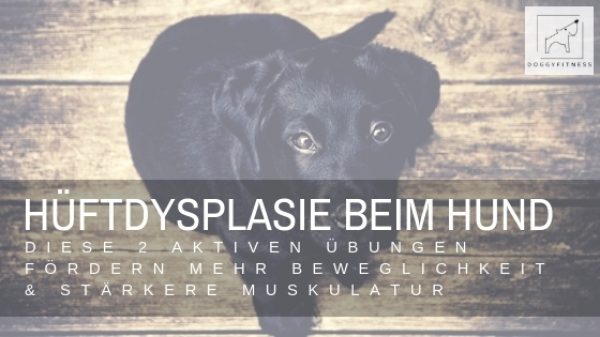You want to actively support your dog with hip dysplasia?
In the blog post on hip dysplasia, I explained to you what HD is, what the consequences are, and how you can help your dog. Therefore, in this article I will show you two effective exercises. They are easy to implement and have a positive effect. Because with these two exercises you train your dog’s agility, musculature and coordination.
Exercise 1 is the slalom walk
And this is how it works:
You need for the exercise min. Five obstacles to get your dog into a flow of movement. At home, for example, you can fall back on small stacks of books. In the garden are suitable flower pots. They shouldn’t be too small so your dog won’t be tempted to jump over them. Then you build the slalom obstacles in a straight line on level ground. The distance is well measured with a dog’s length. Now slowly lead your dog around the obstacles on a short leash. The whole thing should happen as slowly as possible. Because this is the only way your dog’s brain internalizes what the correct and healthy movement should be. Is your dog very excited? Then let him dismount briefly before going around the obstacles. And most importantly, praise your dog when he gets it right. When you reach the end, let your dog sit again for a short time before heading back.
I recommend you to do the exercise once a day with 2 repetitions each.
The effect
With slalom training you train agility, gait and coordination. Your dog shifts his weight from one half of his body to the other, putting equal weight on his legs. Confidence and awareness in his body are improved. At the same time you train the lateral flexion of the spine. It is often affected by the irregular gait pattern associated with hip dysplasia.
Exercise 2 is the stand-sit transfer
And this is how it works:
Your dog surely knows the signal “Sit”. Because from standing to sitting and vice versa, you often bring your dog several times a day. Only as a strength and movement exercise, you probably have not seen them. Your dog should be on a level, non-slip surface. You stand in front of your dog and give him the command to sit. Your dog should sit as straight as possible and not slide comfortably to one side. Please let your dog sit independently. Don’t press him on the butt with your hand or anything like that. The slower your dog makes the movement from stand to sit, the greater the gymnastic effect. He should make this movement slowly and deliberately. The next step is to get your dog back up. In return, you hold treats in front of his nose. Then slowly move backwards a little and give him the signal to stand up again.
Please note
He should stand up slowly without going forward. Only in this way he works only with the muscles of his hind legs and does not use his front legs to pull himself up. If it doesn’t work perfectly right away, be patient. The exercise is more difficult and strenuous than it looks.
Start with 5 repetitions once a day.
The effect
If, as in the case of hip dysplasia, we want to train the muscles and mobility of the joints of your dog’s hind legs, this exercise is perfect. Good side effect: also trains the muscles of the lower back and coordination.
Always consider your dog’s daily form during your training sessions. Even your dog is not in the same good mood and performance every day.
Now you are ready to go! I hope you and your dog have a great time training! What are your experiences with the exercises? Was your dog able to move them easily or are there any questions? Share them with me so I can help you!
I look forward to your message, Yours Tina
Dieser Beitrag ist auch verfügbar auf:
Français (French)
Deutsch (German)
Español (Spanish)















